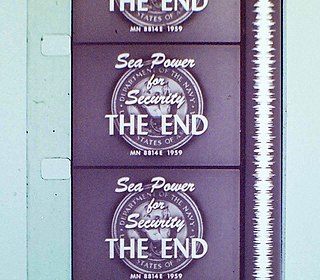
16 mm film is a historically popular and economical gauge of film. 16 mm refers to the width of the film ; other common film gauges include 8 mm and 35 mm. It is generally used for non-theatrical film-making, or for low-budget motion pictures. It also existed as a popular amateur or home movie-making format for several decades, alongside 8 mm film and later Super 8 film. Eastman Kodak released the first 16 mm "outfit" in 1923, consisting of a Ciné-Kodak camera, Kodascope projector, tripod, screen and splicer, for US$335. RCA-Victor introduced a 16 mm sound movie projector in 1932, and developed an optical sound-on-film 16 mm camera, released in 1935.

Conrad Lafcadio Hall, ASC was a French Polynesian-born American cinematographer. Named after writers Joseph Conrad and Lafcadio Hearn, he became widely prominent as a cinematographer earning numerous accolades including three Academy Awards, three BAFTA Awards and five American Society of Cinematographers Awards.
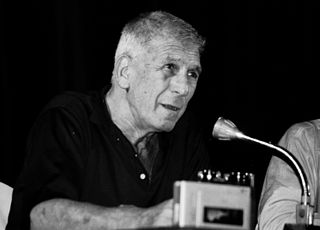
Richard Brooks was an American screenwriter, film director, novelist and film producer. Nominated for eight Academy Awards in his career, he was best known for Blackboard Jungle (1955), Cat on a Hot Tin Roof (1958), Elmer Gantry, In Cold Blood (1967) and Looking for Mr. Goodbar (1977).

Richard Leacock was a British-born documentary film director and one of the pioneers of direct cinema and cinéma vérité.

Centron Corporation is a defunct industrial and educational film production company, that specialized in classroom and corporate 16mm films and VHS videocassettes. A slightly smaller company than its contemporaries such as Encyclopædia Britannica Films, Coronet Films and Learning Corporation of America, it was very successful from the late 1940s through the early 1990s, gaining added fame with the Academy Award-nominated Leo Beuerman in 1969.

Gaetano (Tony) Gaudio, A.S.C. was a pioneer Italian-American cinematographer of more than 1000 films. Gaudio won the Academy Award for Best Cinematography for Anthony Adverse, becoming the first Italian to have won an Oscar, and was nominated five additional times for Hell's Angels, Juarez, The Letter, Corvette K-225, and A Song to Remember. He is cited as the first to have created a montage sequence for a film in The Mark of Zorro. He was among the founders of the American Society of Cinematographers, and served as president from 1924 until 1925.
The 19th Academy Awards were held on March 13, 1947, honoring the films of 1946. The top awards portion of the ceremony was hosted by Jack Benny.
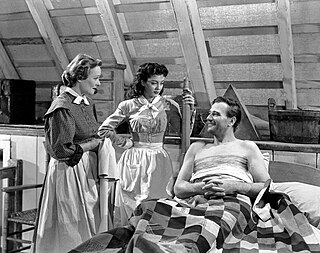
Archibald Job Stout, ASC was an American cinematographer whose career spanned from 1914 to 1954. He enjoyed a long and fruitful association with John Ford, working as the principal cinematographer on Fort Apache (1948) and second unit cinematographer on She Wore a Yellow Ribbon (1949) and The Quiet Man (1952), becoming the only 2nd unit cinematographer to receive an Oscar. In a wide-ranging career, he also worked on such films as the original version of The Ten Commandments (1923) and several Hopalong Cassidy and Tarzan films. His last film was the airborne disaster movie The High and the Mighty in 1954.
Ralph Staub was a movie director, writer, and producer.
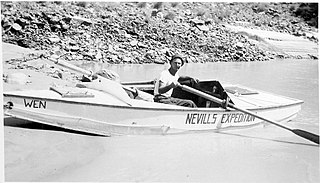
Norman D. Nevills was a pioneer of commercial river-running in the American Southwest, particularly the Colorado River through the Grand Canyon. He led trips including Dr. Elzada Clover and Lois Jotter, the first two women to successfully float the Grand Canyon, and Barry Goldwater.

Kon-Tiki is a Norwegian documentary film about the Kon-Tiki expedition led by Norwegian explorer and writer Thor Heyerdahl in 1947, released in Sweden, Norway, Finland, and Denmark in 1950, followed by the United States in 1951. The movie, which was directed by Thor Heyerdahl and edited by Olle Nordemar, received the Academy Award for Best Documentary Feature for 1951 at the 24th Academy Awards. The Oscar officially went to Olle Nordemar.

Ten Who Dared is a 1960 American Western film directed by William Beaudine and starring Brian Keith, Ben Johnson, John Beal and James Drury. It was produced by Walt Disney Productions and released by Buena Vista Distribution. It tells the story of United States Army officer John Wesley Powell, who was the first to travel down the Colorado River, and the dangers that he and nine other men had to face while making a map of the region during their 1869 expedition. Hired by Walt Disney Studios in 1959 as a technical adviser, Otis R. Marston led a film crew through the Grand Canyon to film river running and background scenes for the film.

Lionel Lindon, ASC was an American film cameraman and cinematographer who spent much of his career working for Paramount.
Jerry Bresler was an American film producer. He won an Oscar in 1944 as co-producer for Heavenly Music and in 1945 for Stairway to Light.
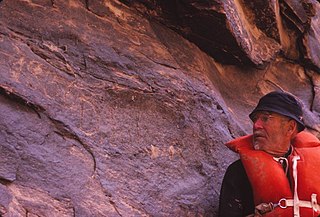
Otis Reed "Dock" Marston was an American writer, historian and Grand Canyon river runner who participated in a large number of river-running firsts. Marston was the eighty-third person to successfully complete the water transit of the Grand Canyon. He spent the last thirty years of his life writing his magnum opus on the history of the first 100 Grand Canyon river runners. In researching his book, he amassed a vast collection of material on early river runners in the American Southwest, especially runners of the Green and Colorado Rivers. His collection is housed in the Huntington Library in San Marino, California.
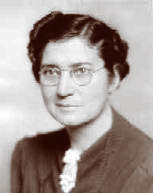
Elzada Clover (1897–1980) was an American botanist who was the first to catalog plant life in the Grand Canyon on the Colorado River. She and Lois Jotter became the first two women to raft the entire length of the Grand Canyon.

Frank Redman was an American cinematographer from the end of the silent era through the 1960s. During his almost 40-year career, he shot over 60 feature films, as well as several film shorts and serials. In the 1950s, he transitioned to the smaller screen, where he was most well known for his work on the iconic television show, Perry Mason from the end of the 1950s through 1965.

Hugh Carson Cutler was a plant taxonomist, economic botanist, plant collector, and pioneer of paleoethnobotany.
Donald Sylvester is an American sound editor who has worked on over 100 films. He is best known for his work with James Mangold on the films Ford v Ferrari (2019), Logan (2017), 3:10 to Yuma (2007), and Walk the Line (2005). Sylvester won the Academy Award for Best Sound Editing at the 92nd Academy Awards for Ford v Ferrari and BAFTA Award for Best Sound at the 59th British Academy Film Awards for Walk the Line. He has been a member of BAFTA since 2007.

Frank Elmer Masland Jr was an American industrialist, conservationist, explorer, early river runner in the Grand Canyon, and philanthropist.
















